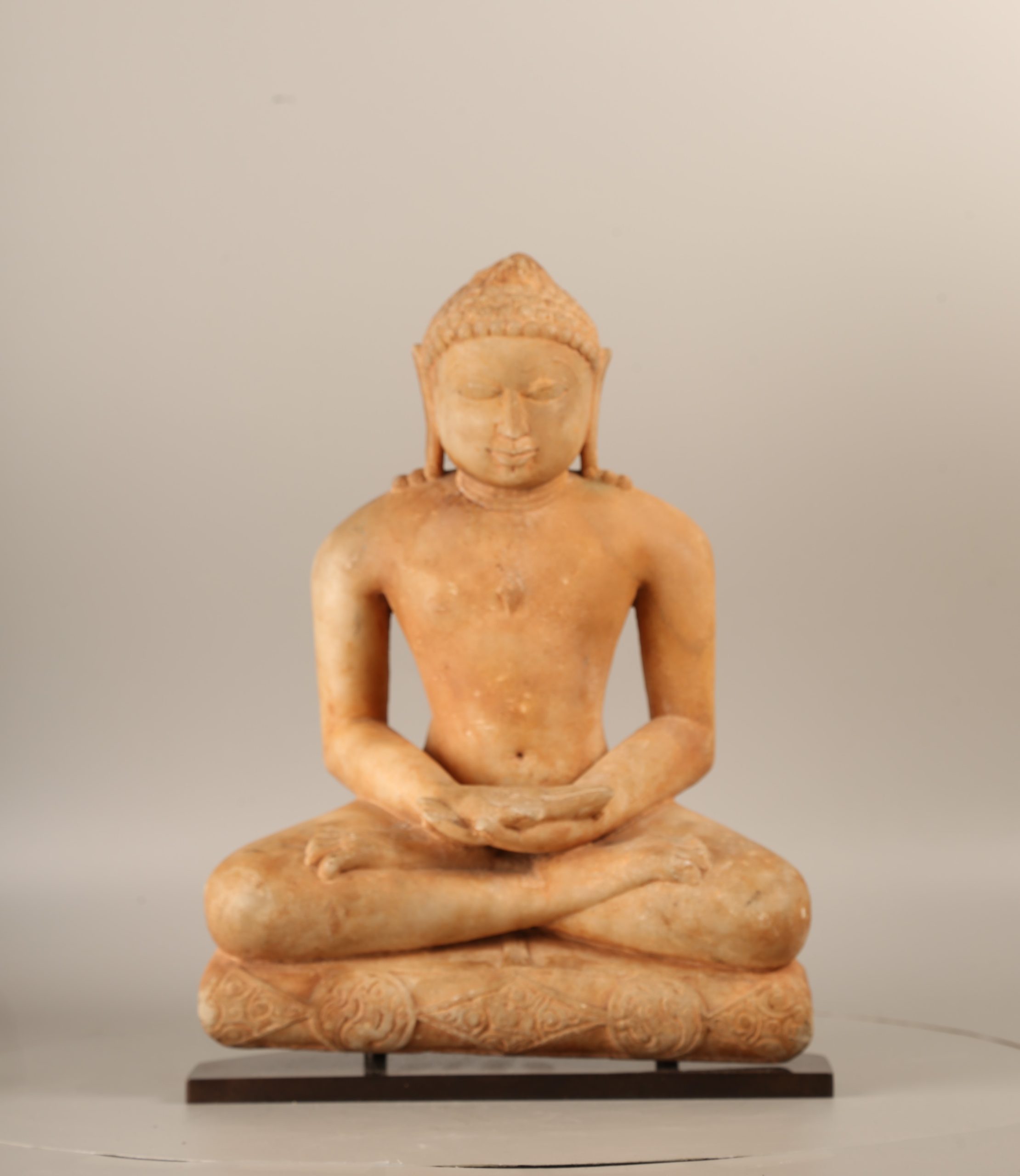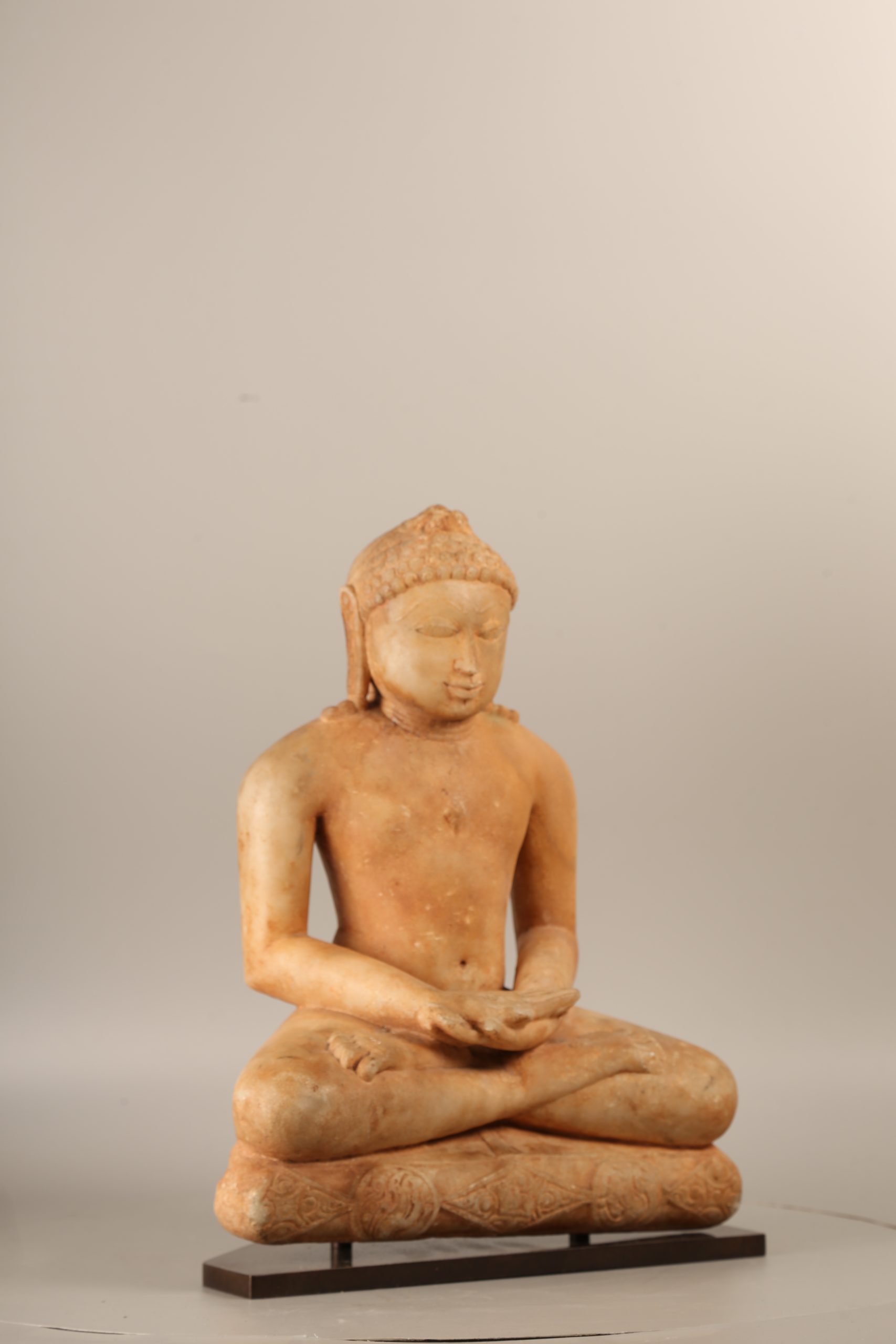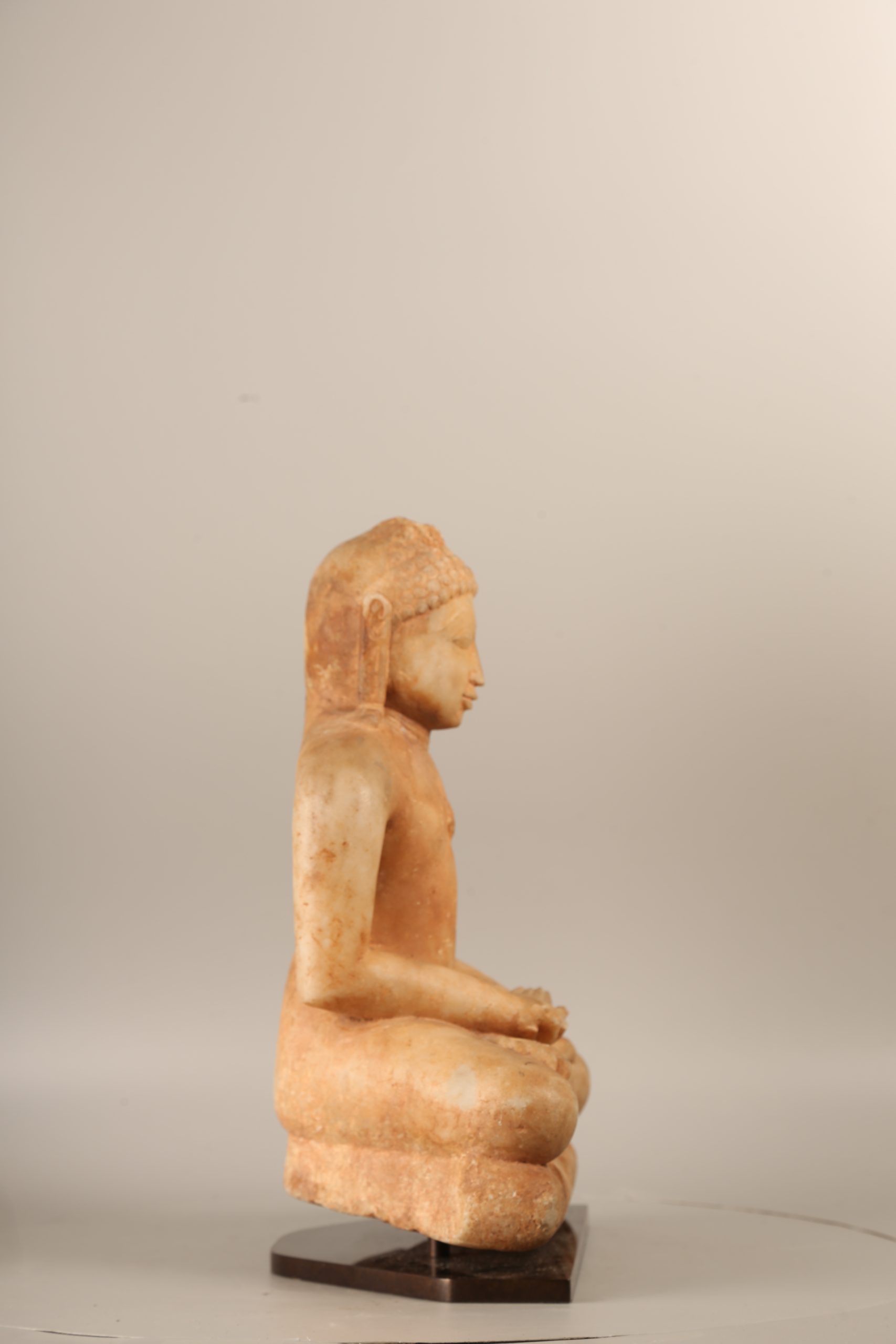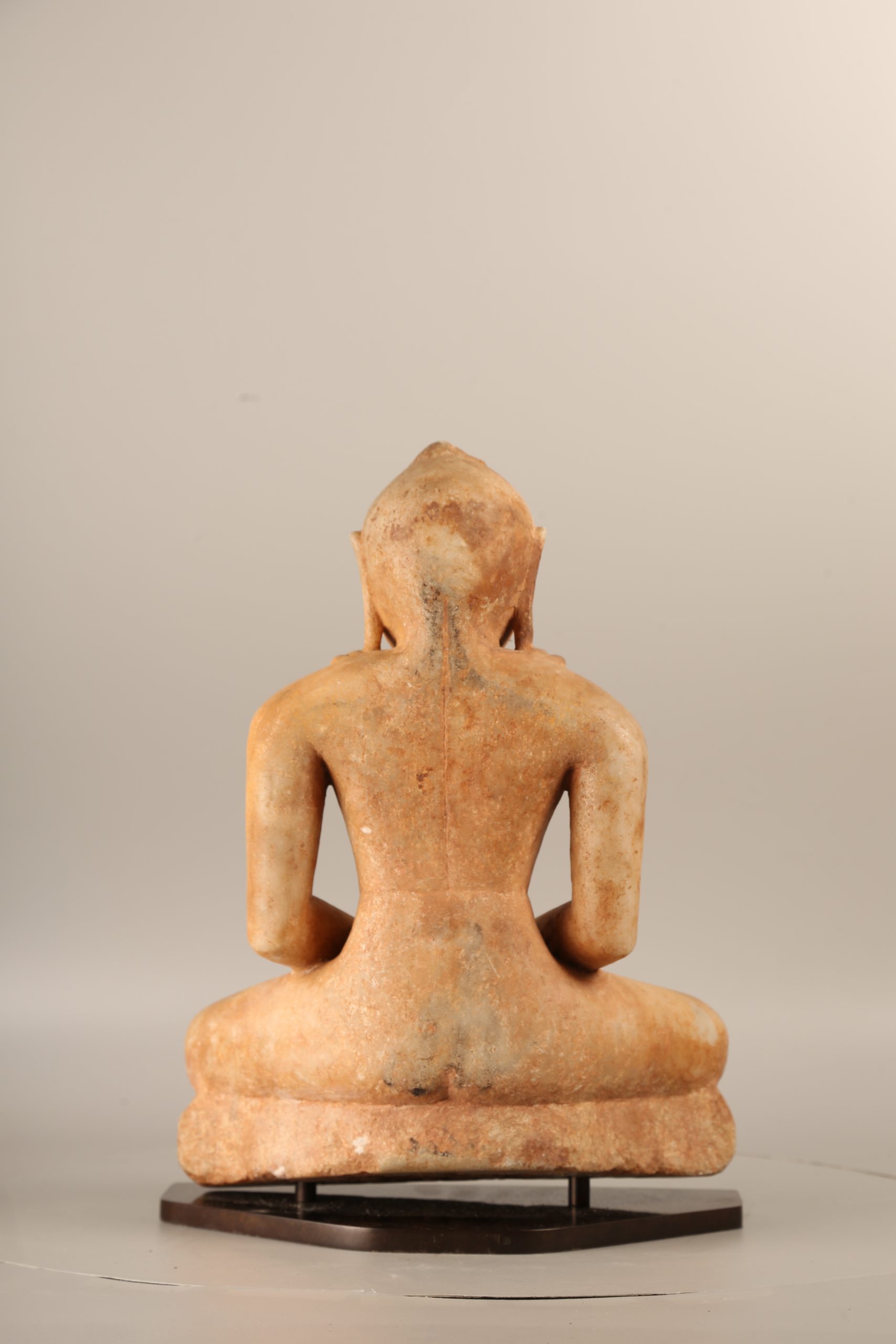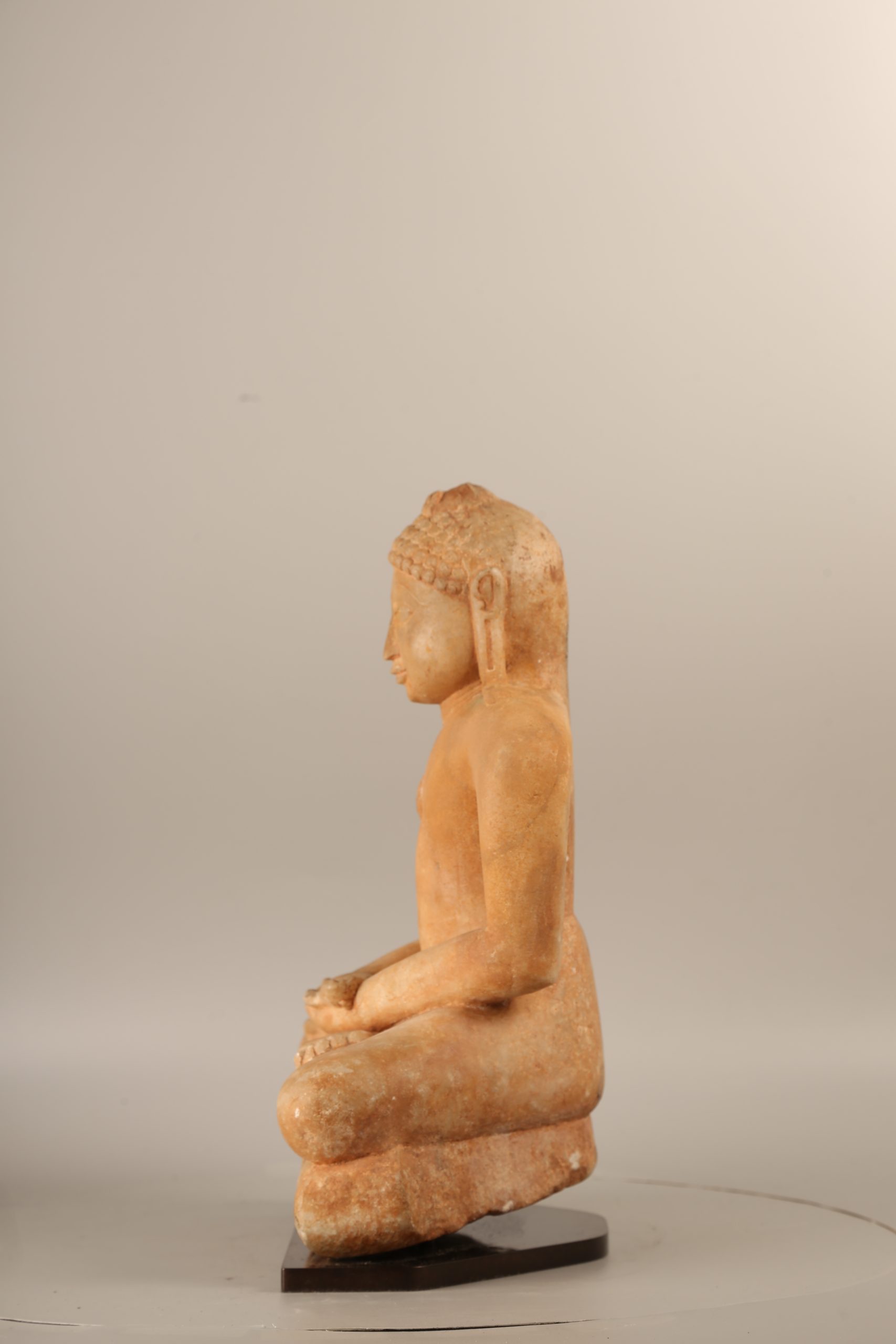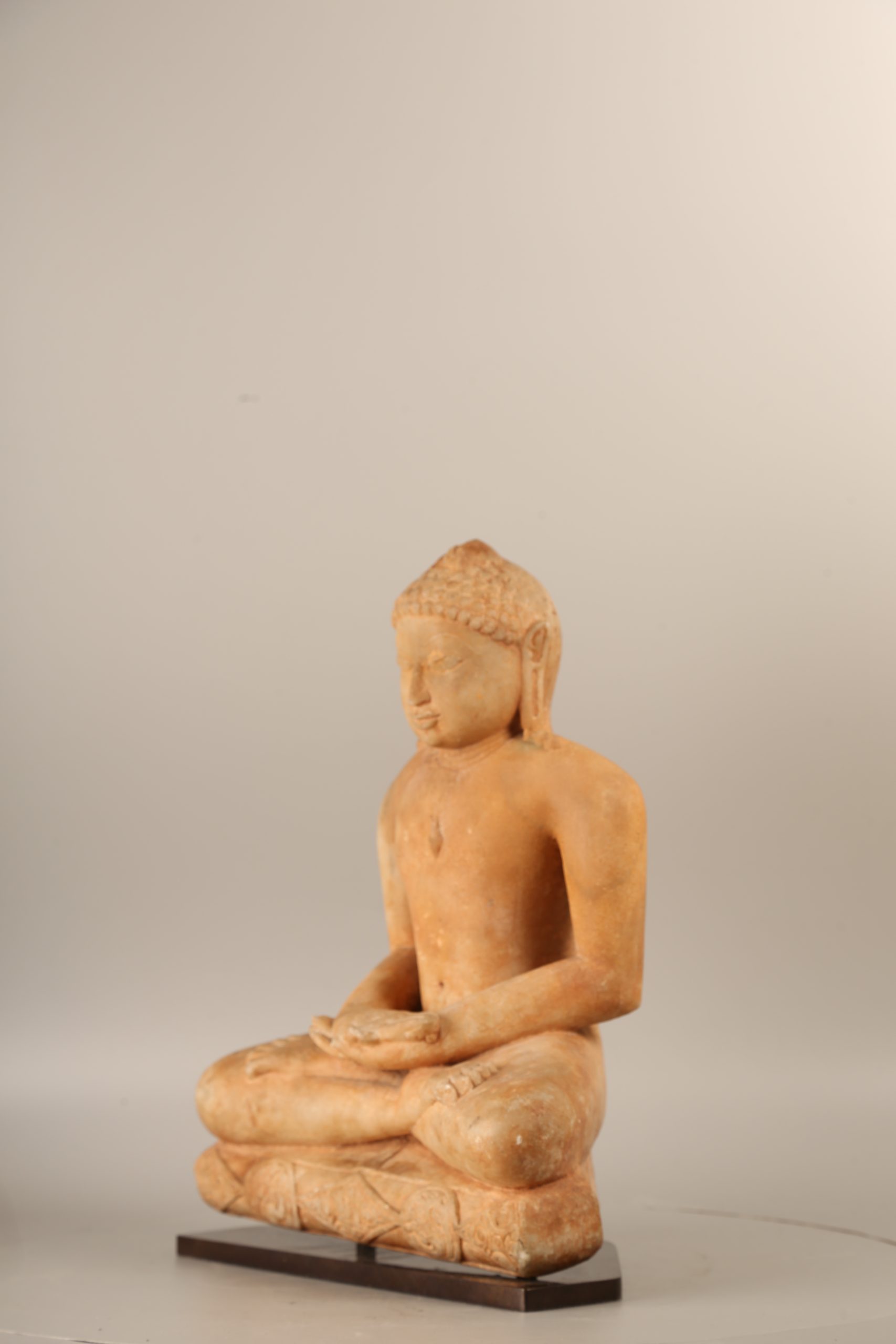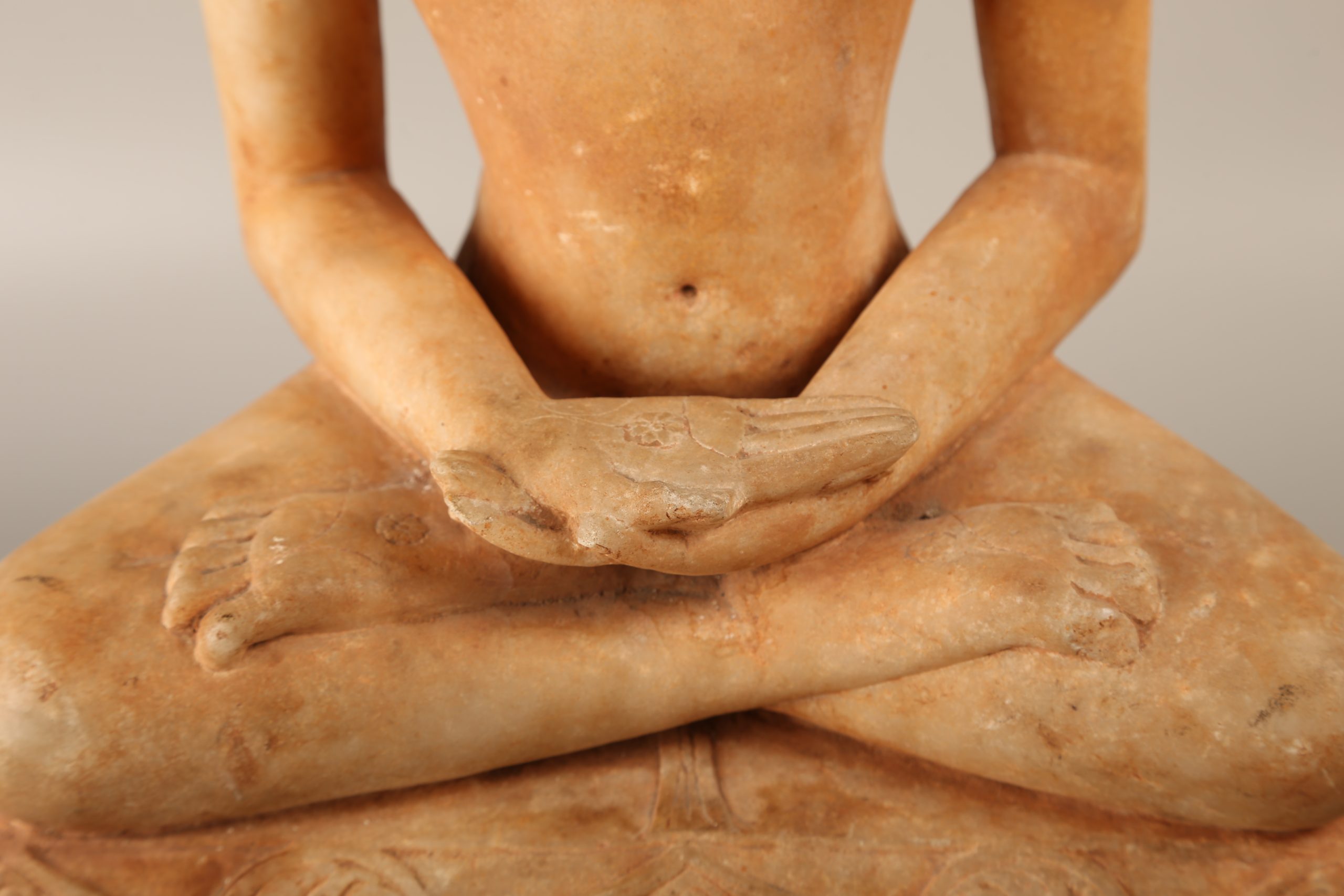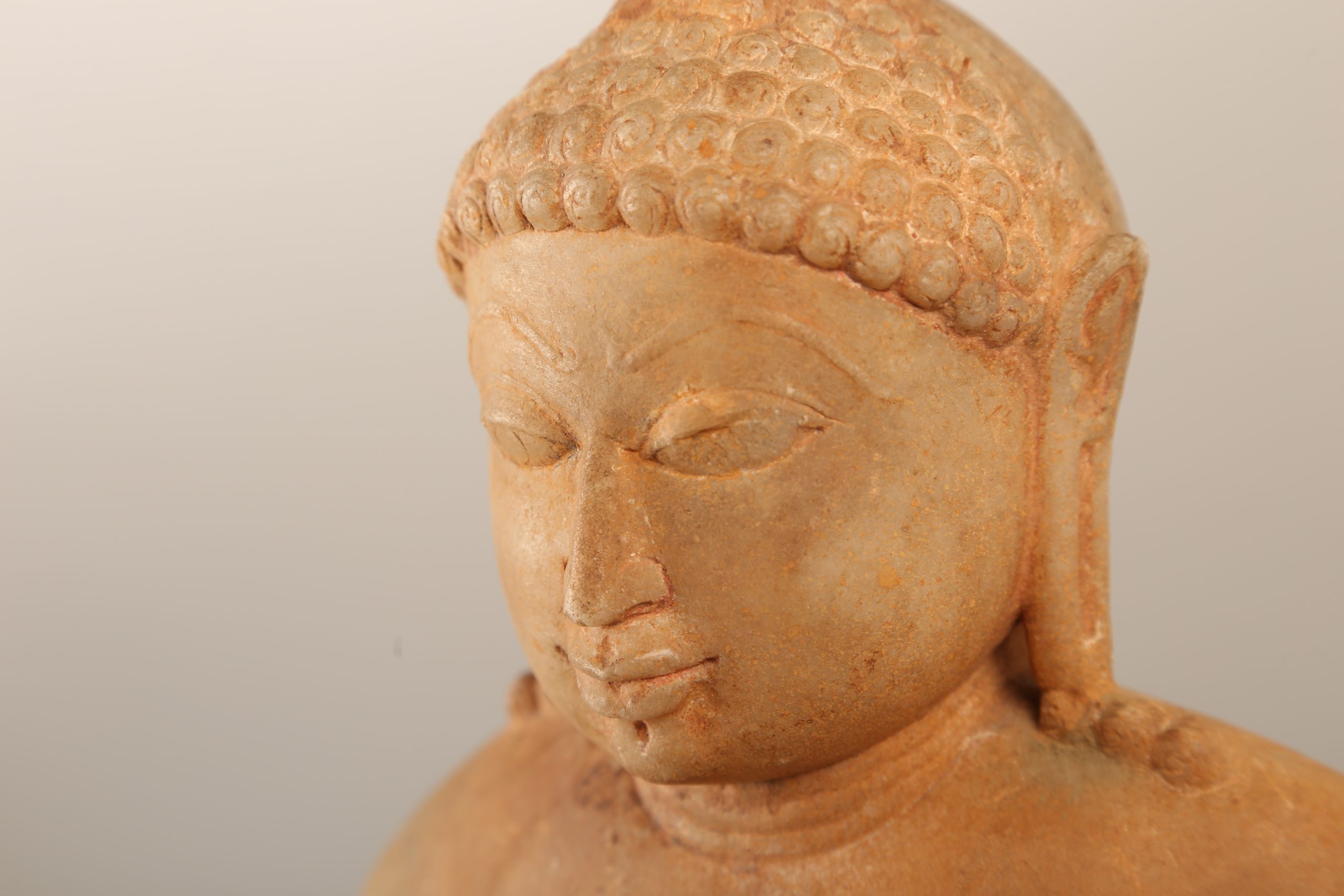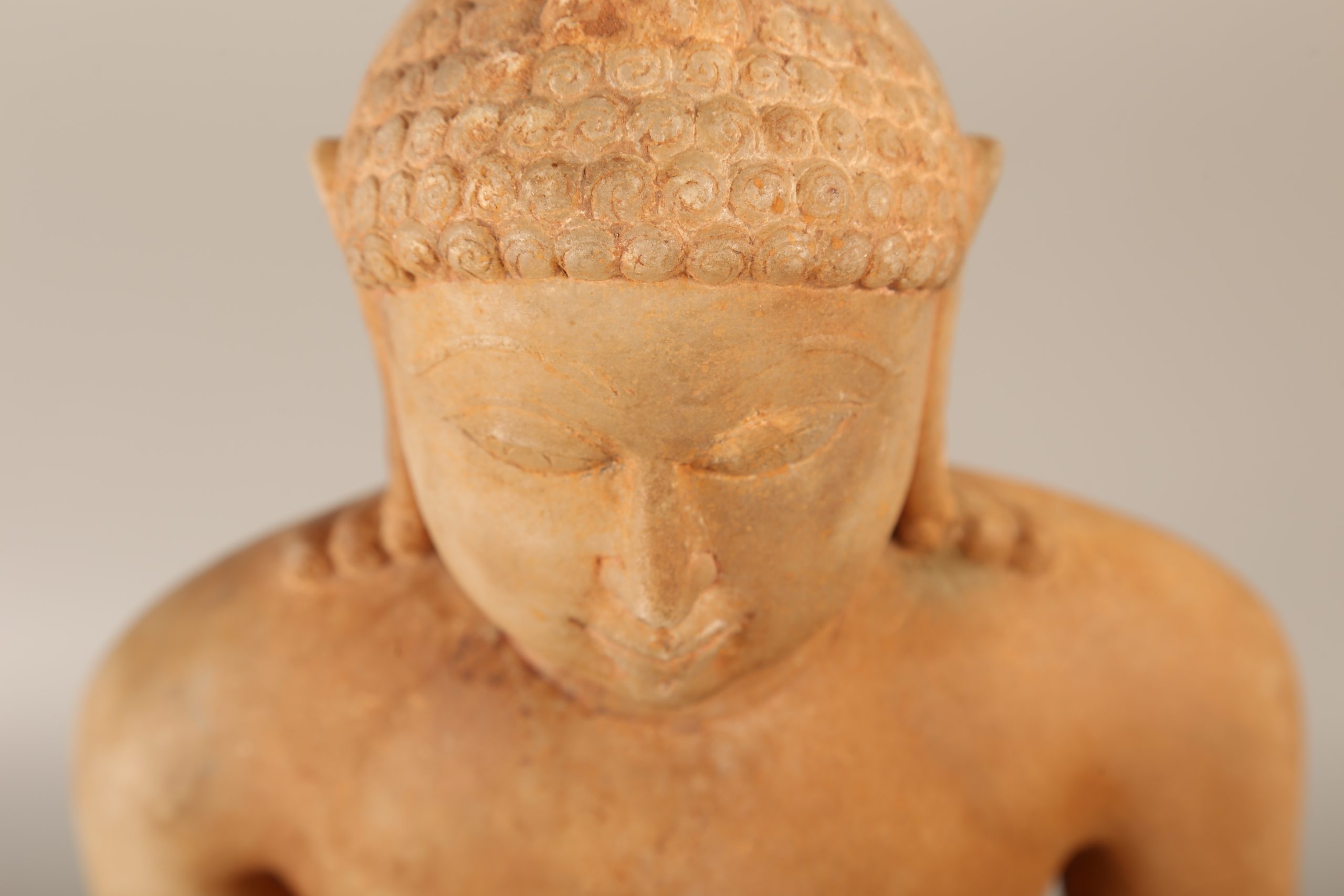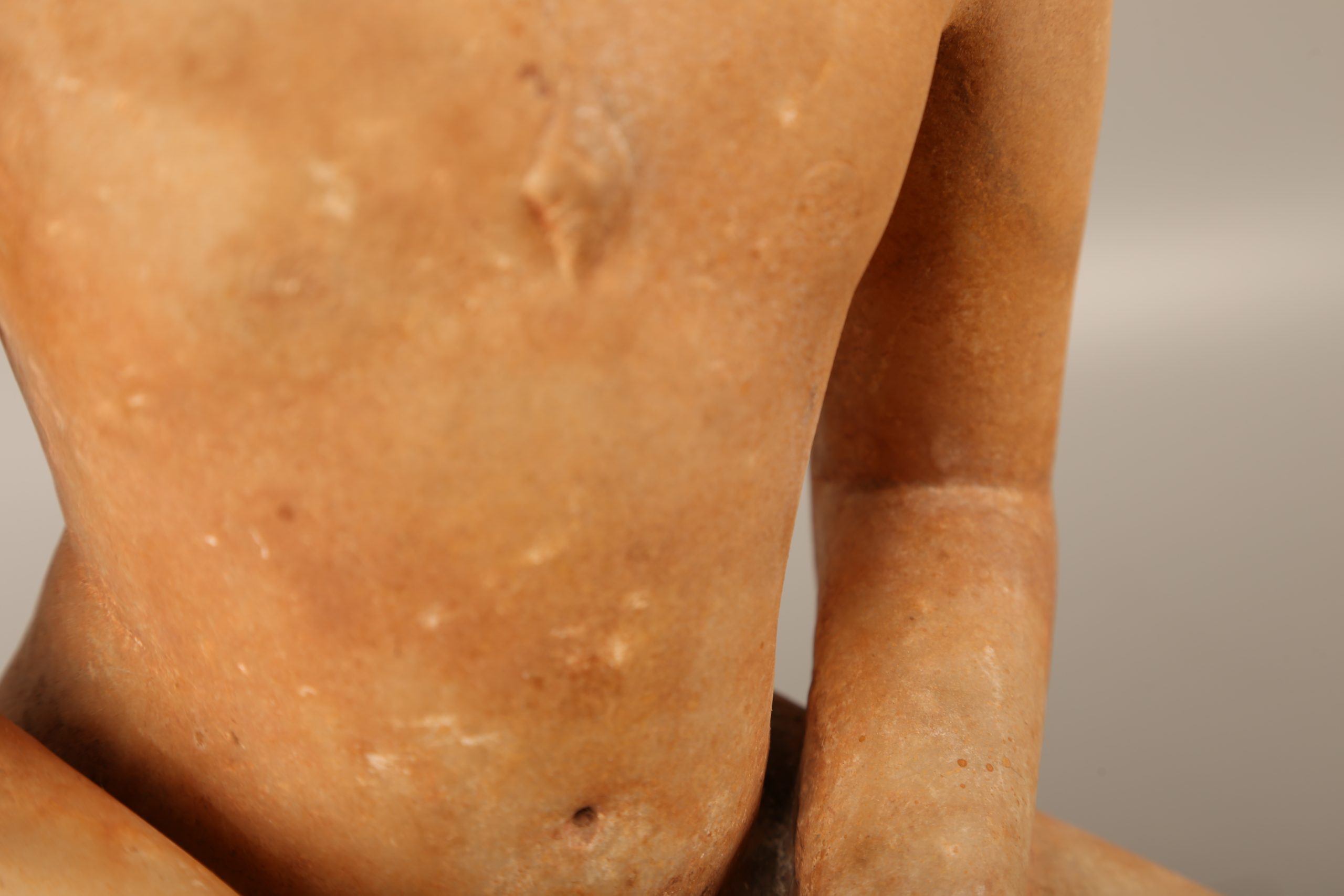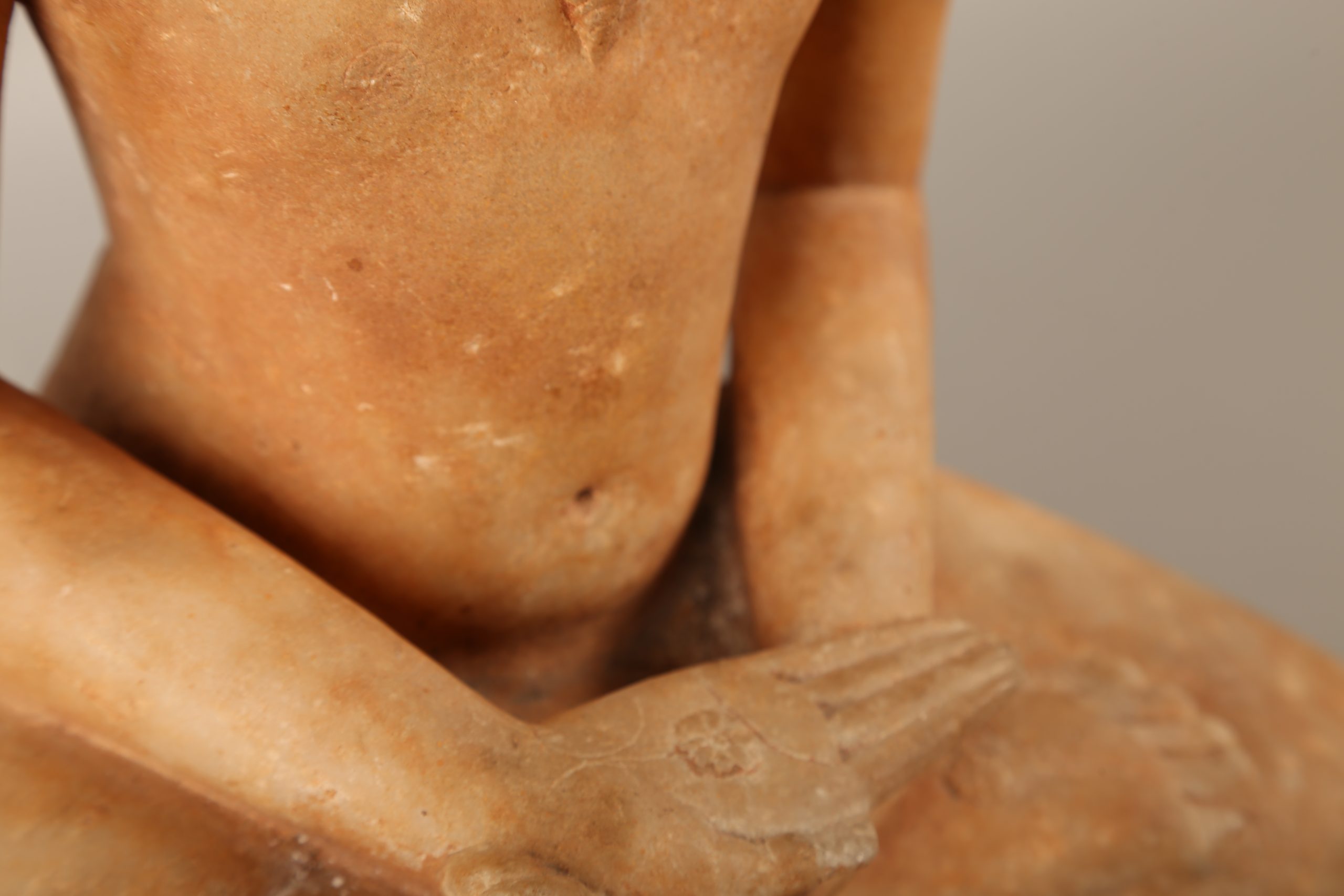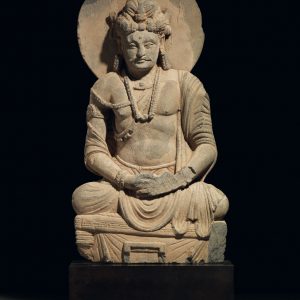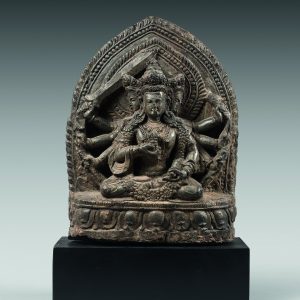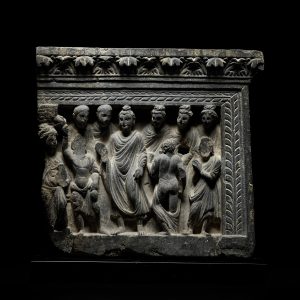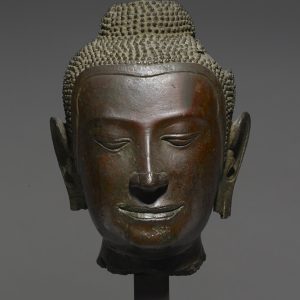Tīrthaṅkara Jain
Marble
India
11th century
H. 33 cm
Description
This sculpture, in an exceptional state of preservation, is dedicated to the Jain cult. Seated cross-legged, with his hands in his lap, the jinase is presented to the viewer in a frontal attitude. He is depicted naked – in accordance with Jain iconographic requirements – and his hairstyle is treated in stylised curls. His large eyes, fine nose and full lips with a slight smile contribute to the softness of his face.
The strong geometry and stylization characteristic of Jain works are softened here by the particular care given to the contour lines and the thinness of her eyebrows, which considerably refine the face.
Jainism, an Indian religion that predates Buddhism
Jain shrines contain countless representations of the Tīrthaṅkara, also called Jina, omniscient beings who have escaped the cycle of reincarnations. These extraordinary characters, twenty-four in number, are found throughout the history of the world and are responsible for transmitting the foundations of Jain doctrine throughout the centuries. This doctrine predates Buddhism and one of its fundamental principles is non-violence (ahiṃsā), which applies to all creatures.
A religious art that spread throughout India
The work is characteristic of the medieval period in India, and its refinement is quite remarkable. The decorative frieze on which the sculpture is based is made up of geometric forms, which are complemented by scrolls and interlacing. Inspired by the canons of Gupta art, Jain statuary oscillates between profusion of decoration and austere idealisation of the portraits. The roundness of the facial features still echoes the great classical aesthetics of the Gupta Empire. It was at this time that the Jain canon was established, borrowing from Buddhist iconography the distinctive marks of sanctity such as the cranial protuberance symbolising the intelligence of the holy man.

